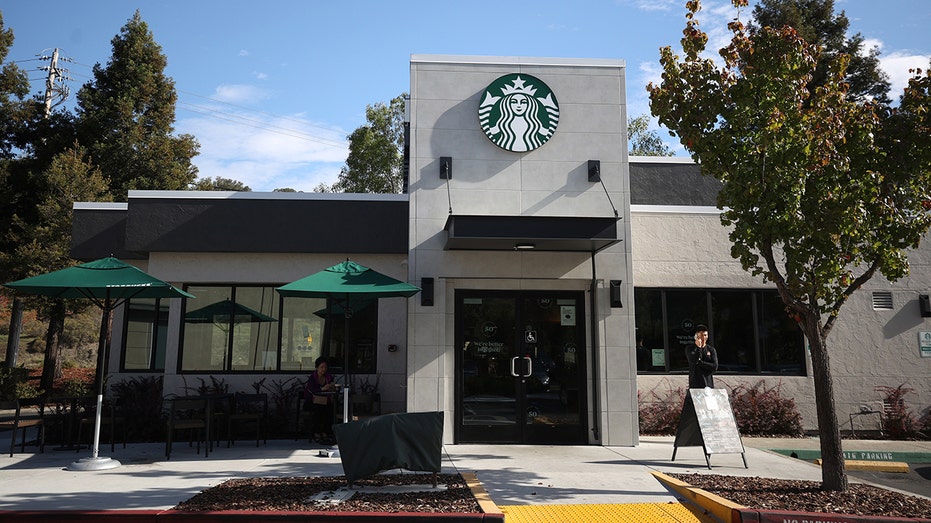Shortage of disposable coffee cups stirs an American energy crisis
Starbucks told investors it would likely face supply chain troubles further into the year
On a recent morning, Chelsie Nalley’s go-to Starbucks in Chattanooga, Tenn., left her high and dry. The store had plenty of coffee, she said, but none of her favorite 24-ounce cups.
Ms. Nalley called a Starbucks two blocks away and pleaded for a barista to jot her name on a Venti cup before they were all gone. Then she ran. America’s latest shortage is of disposable cups, a potential energy crisis for an up-and-at-’em nation accustomed to caffeine on the go.
"They’re always out," said Ms. Nalley, 29 years old. She switched to 30-ounce Trenta cups until those, too, ran dry. A Starbucks Corp. spokesman said the chain was working to get more. The company said it typically goes through 6 billion a year, and leftover holiday-theme cups are helping fill the gap.
Restaurateurs and suppliers around the country face the same empty cupboard. Disposable cups imported from China and elsewhere are stuck in ports along the mucked-up supply chain. American paper mills are short workers. And the U.S. hasn’t caught up from the extreme cold snap in Texas last year that suspended production of resins used to make plastic cups and the coating on paper cups.
| Ticker | Security | Last | Change | Change % |
|---|---|---|---|---|
| SBUX | STARBUCKS CORP. | 85.45 | +0.37 | +0.43% |
STARBUCKS ACCUSED OF ‘UNION-BUSTING’ AFTER FIRING SEVERAL WORKERS IN MEMPHIS
At Wetzel’s Pretzels LLC, a California-based chain known for its hot pretzels and lemonade, franchise-holders have joined forces to scour the inventory of local restaurant suppliers and whatever is available on Amazon. They send group alerts when they hit pay dirt.
"Think about how creative you are in finding a Covid test. It’s like that," said Jennifer Schuler, Wetzel’s chief executive. Paper-goods suppliers told her they were running at half capacity because they were short-handed, she said.
The 350-location pretzel chain has forgone its usual branded cups for whatever generic cup is in stock. In the current state of emergency, any available cup, in Ms. Schuler’s upbeat view, is seen as a cup half full.
"We are like, ‘Yes! We got some cups!’ " she said.
Khari Parker, co-owner of Connie’s Chicken and Waffles in the Baltimore area, said area restaurants have a handshake deal to share high-demand supplies, keeping track of who owes whom with a promise to square up later.
That has helped, Mr. Parker said. But the cup shortage has revealed a complementary catastrophe—lid scarcity. In this case, substitute goods are spotty. Various lid brands don’t always match cups of equal capacity. One lid that seals a 24-ounce cup might fit poorly on another, risking beverage dribble and customer complaints.
Proper matching has been trial-and-error, Mr. Parker said: "We wait and hope that the top size will fit." He removes certain drink offerings from online menus when supplies are especially low, reserving containers for in-person customers. He said he also pays more for the cups he gets—$78.95 for a case of 600 24-ounce plastic cups in January, up 70% from last year.
Some places are fighting shortages and higher costs by selling branded, reusable cups that carry a drink discount. These environmentally friendly options were largely off the table in the pandemic, restaurant operators said.

A Starbucks store in Novato, California. (Justin Sullivan/Getty Images / Getty Images)
STARBUCKS TO HIKE PRICES TO OFFSET INFLATION; LOWERS PROFIT GUIDANCE
Josh Sewell, owner of Cottonwood Coffee Company in southeast Alabama, said he started selling reusable cups at a loss in October, betting they would help reduce his shop’s reliance on disposable cups as the shortfall continues.
Mooyah Burgers, Fries & Shakes, based in Plano, Texas, hasn’t gotten its custom plastic cups since July, said Maria Angles, vice president of supply chain. Mooyah switched to U.S.-made paper cups for its shakes. They work fine, she said, but don’t show off the creamy beauty of blended ice cream the way clear plastic does.
The Plastics Industry Association has forecast a 3.1% increase in the output of plastic products, including cups. Perc Pineda, the trade group’s chief economist, said the worker shortage has hampered plastics plants. Shortages of both labor and inputs have pushed prices for plastic packaging products 24% higher from a year ago, federal data show.
Priscila Hernandez, a 23-year-old social-media coordinator from Anaheim, Calif., said her Starbucks stores routinely run out of cups, lids, coffee stoppers and cup sleeves. She feels pity for baristas—but still, she said, "It is a coffee shop. You would expect them to have cups and lids and things like that."
CLICK HERE TO READ MORE ON FOX BUSINESS
Starbucks told investors this month it would likely face supply chain troubles further into the year.
Froggy Borges, a customer-service representative in San Luis Obispo, Calif., was craving soda with lunch last month, but the office soda machine was out of cups and lids. The supplier sent notice that they had none to sell, said Mx. Borges, who uses gender-neutral pronouns.
Employees used coffee cups until they ran out. Mx. Borges, 30, drank Mountain Dew with a straw from a white cardboard bowl.
"My problem-solving skills were not working at their best when I had not yet had my caffeine," they said.




















